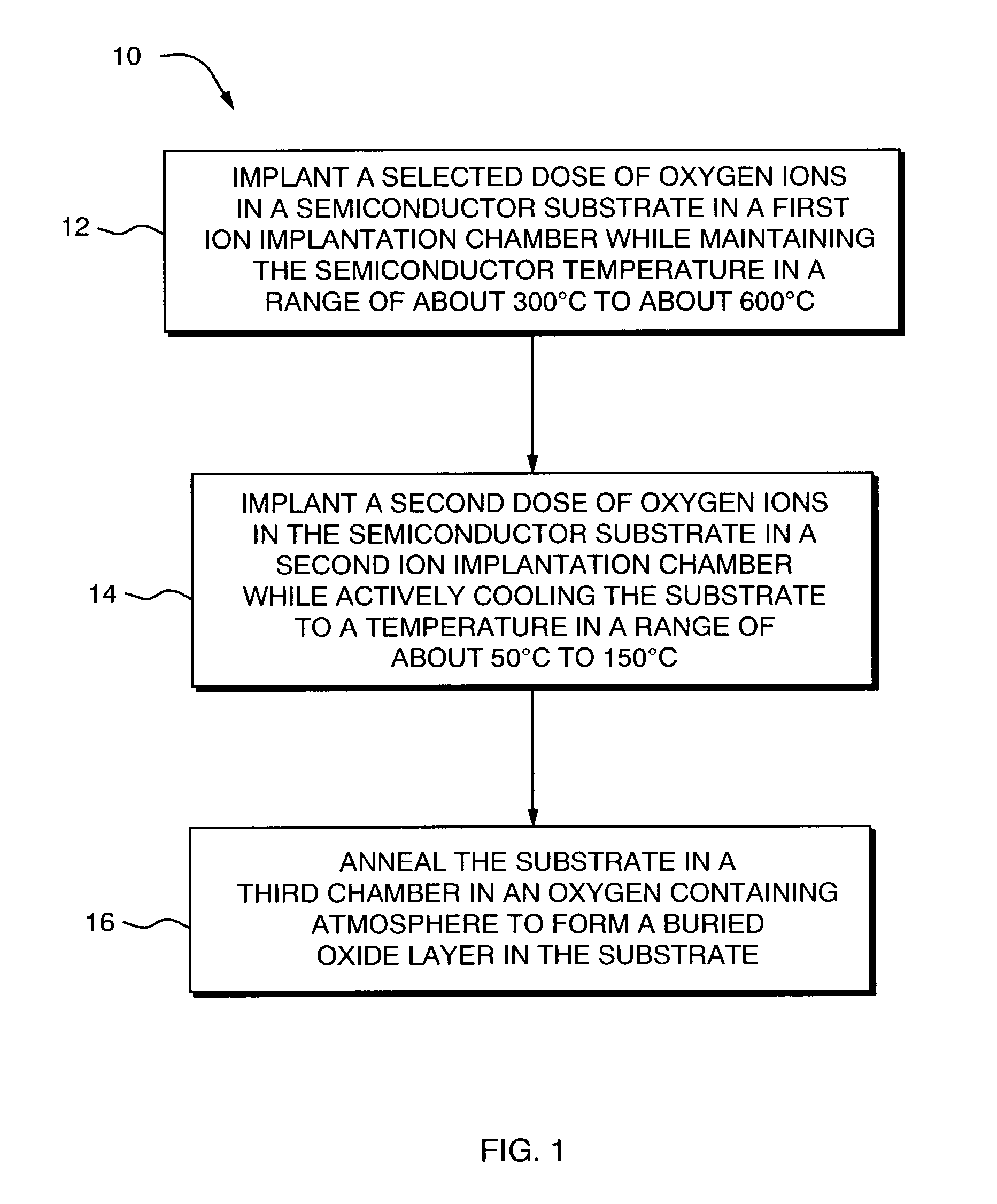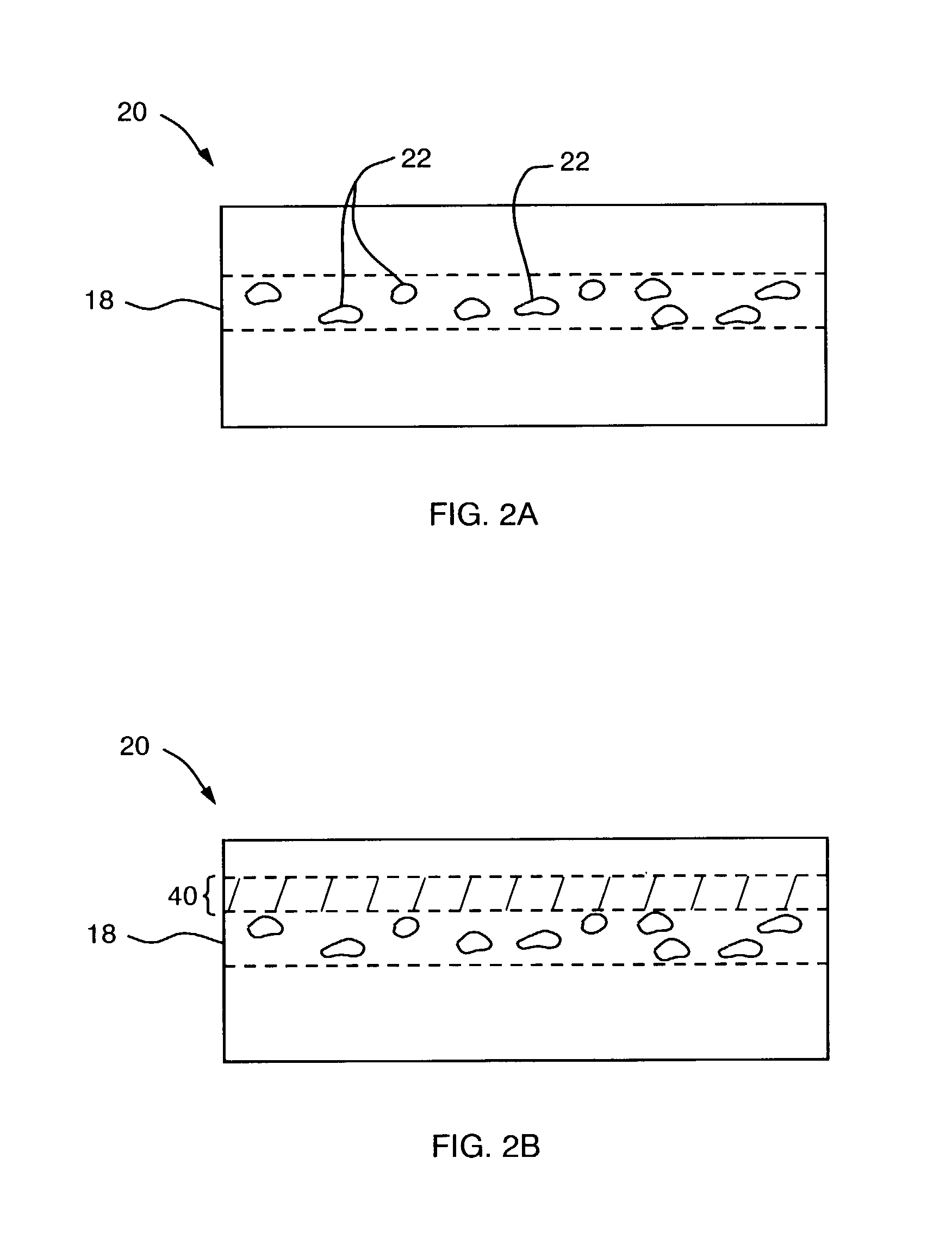Active wafer cooling during damage engineering implant to enhance buried oxide formation in SIMOX wafers
a technology of active wafers and engineering implants, which is applied in the direction of semiconductor devices, electrical equipment, basic electric elements, etc., can solve the problems of limited degree of cooling that such approaches afford
- Summary
- Abstract
- Description
- Claims
- Application Information
AI Technical Summary
Benefits of technology
Problems solved by technology
Method used
Image
Examples
Embodiment Construction
[0027]The present invention provides methods and systems for forming a buried oxide (BOX) region in a semiconductor substrate, such as, silicon, by implanting oxygen ions in the substrate in at least two distinct steps, performed at two different temperature regimes, followed by an annealing step at an elevated temperature in an oxygen containing atmosphere. In the first implantation step, a dose of oxygen ions in a range of about 1016 to about 1018 ions / cm2 is implanted in the substrate. In the second implantation step, another dose of oxygen ions, for example, in a range of about 1013 to about 5×1015 ions / cm2, is implanted in the substrate while the substrate temperature is actively maintained in a range of approximately 50 to 150° C. Subsequently, an annealing step in an oxygen-containing atmosphere is performed to generate a continuous BOX region.
[0028]Although in the exemplary embodiments described below the semiconductor substrate is selected to be silicon, a method according ...
PUM
 Login to View More
Login to View More Abstract
Description
Claims
Application Information
 Login to View More
Login to View More - R&D
- Intellectual Property
- Life Sciences
- Materials
- Tech Scout
- Unparalleled Data Quality
- Higher Quality Content
- 60% Fewer Hallucinations
Browse by: Latest US Patents, China's latest patents, Technical Efficacy Thesaurus, Application Domain, Technology Topic, Popular Technical Reports.
© 2025 PatSnap. All rights reserved.Legal|Privacy policy|Modern Slavery Act Transparency Statement|Sitemap|About US| Contact US: help@patsnap.com



